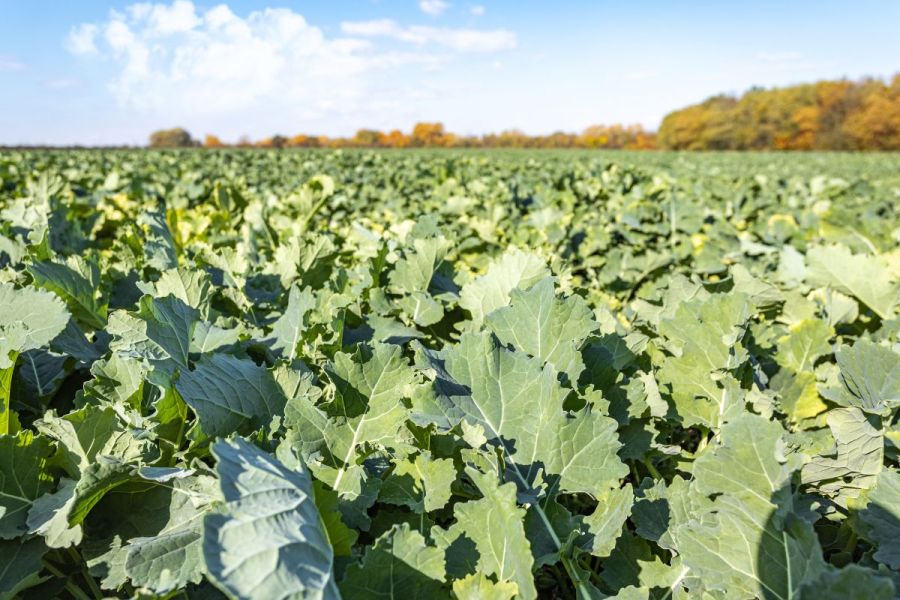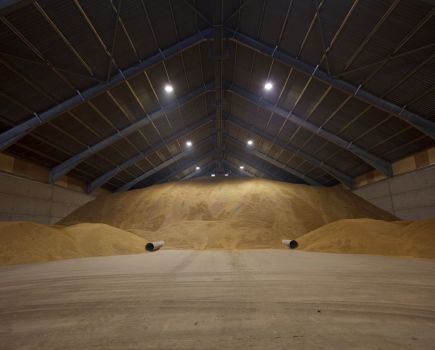Moisture has been the defining difference between healthy and forward oilseed rape crops and others falling foul of cabbage stem flea beetle. CPM looks at how weed management should be tailored to crop growth this autumn.
“Previously, it’s been a bit of a ‘spray and pray’ situation.”
By Melanie Jenkins
Other than ice cream manufacturers, very few seem to have benefited from the prolonged hot and dry period over the summer months, and those wanting to plant oilseed rape were no exception.
“It’s been so dry that farmers have been unable to drill,” says John Sellars of Corteva. “But as of early September, I imagine there was some moisture knocking around and growers would have been trying to get as much OSR into the ground as they possibly could. So then it’s just a case of trying to get it out of the ground and established.”
Those who were able to drill into moisture in early August should have been able to manage the situation with cabbage stem flea beetle (CSFB), so those crops should be up and away, he says. “At this point you can start looking at weed control and budget for whether or not the crop is worth investing in. Later drilled crops without moisture may have suffered an infestation and the investment might not be worth it in case the crop should fail.
“And with this year in mind, a lot of growers might not have got OSR into the ground until September which will have coincided with the CSFB – so more than ever we want to make sure crops are established before looking at weed control.”
Historically, growers would have gone in with a pre-emergence or early post-emergence application once weeds were identifiable – all before growers knew if their crops would actually establish, explains John. “Previously, it’s been a bit of a ‘spray and pray’ situation.”
But now growers should have less concerns about not applying a pre- or post-em to those early weed flushes, he says. “Now that we have Belkar (halauxifen-methyl+ picloram), growers are able to wait until their crops are established and away from CSFB before deciding whether to apply a herbicide for broadleaf weed control.”
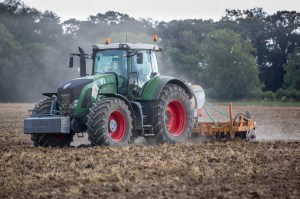
It’s been so dry that a lot of farmers have been unable to drill into good conditions.
However, that’s not to say that growers with specific weed problems – such as cruciferous plants – shouldn’t look at using pre-ems, such as clomazone, advises John. “But if it’s too dry, you’ll still have the issue of being unable to apply a pre-em, which is where managing post-em control with Belkar can be particularly useful, especially as there’s a wide application window from the start of September right through to the end of December. There are a number of different strategies to choose from.”
Once a crop is established, John suggests applying 0.25 l/ha to control key weeds, such as cleavers, cranesbill and poppy, with up to about 2cm growth. “Interestingly, it’ll control any species of cranesbill – so cranesbill is just cranesbill now. Belkar also means we now have control over weeds we haven’t before, like cleavers, which it does a good job on. And it’ll kill shepherd’s purse as well,” he adds.
“Then, if your ground flushes weeds, you can go on again a bit later – once you think the flush has finished – with a second application of 0.25 l/ha of Belkar. Or you can just wait until all the weeds are through the ground and go on with one application of 0.5 l/ha from the end of September and maybe into November. The weeds will be bigger at this point but the rate is higher to cope.”
However, one thing to be aware of is that Belkar can’t be mixed with boron or with a fungicide that has growth regulatory activity, he warns.
After the early flush of broadleaf weeds, growers are likely going to look at grassweed control, says John. “Centurion Max (clethodim) will provide control of blackgrass primarily, but one thing to point out is that if you’re using Centurion Max, it means Belkar applications will have to be worked around this to comply with label recommendations. There’s a window either side of an application of Centurion Max where you mustn’t apply herbicides, so manage your Belkar so it can go on to tie in with this – whether it goes on before or after.”
The next consideration for broadleaf and grassweed control is Astrokerb (propyzamide+ aminopyralid), he says. “As it’s got aminopyralid in, Astrokerb really does give control of not only blackgrass, but also of poppies and mayweed.
“But do be aware, although the label says it can be applied from the start of October, we advise that soil temperatures should be 10˚C and declining,” warns John. “This means that you’re targeting the propyzamide in Astrokerb and/or Kerb (propyzamide) to stay in the top 5cm of the soil, which is hopefully – with minimal cultivations – where blackgrass will be germinating from.”
John suggests growers use the Kerb Weather Data tool to determine what soils temperatures are likely to be and to assess weather conditions. “You can also use it to get an idea of the field slope so you can start to assess the risk to watercourses from propyzamide.”
So a popular combination for broadleaf and grassweed control is an earlier application of Belkar followed up with Astrokerb, says John. “But what a lot of growers are starting to do as an alternative, is an application of Kerb tank mixed with Belkar in November.”
So what kind of picture has unfolded up and down the country and what are regional agronomists advising with the season in mind?
South East

According to Keith Truett, it’s a unique year where the usual technique of minimal soil disturbance establishment has been the least successful.
In the South East, a lot of growers will drill home-saved seed as early as they can with a companion crop, says NIAB agronomist, Keith Truett. “This way, if they don’t get a successful OSR crop then they’ll have a cover crop.”
But the exceptionally long, dry period this year meant there was no point planting anything until it rained. “We didn’t get any rain in Kent until September, so I’ve written off more crops this year than I ever have before. Mainly because the crops came up so late it was just as the slugs emerged and we got low levels of CSFB.”
According to Keith, most OSR crops have only come out of the ground in the past 10 days [at the time of writing]. “It’s a unique year where our usual technique of minimal soil disturbance establishment has been the least successful. The most successful crops have been where more soil has been moved or crops have been drilled with a combination unit.”
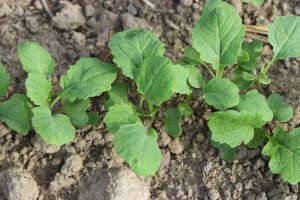
A lot of growers might not have got OSR into the ground until September.
The lack of moisture has also meant there hasn’t been a great deal of weeds around. “Some are taking out volunteer cereals now and we’ve had a big flush of grassweeds over the past two weeks. Where blackgrass is an issue we might put on Centurion Max but it’ll usually just be a graminicide,” he explains.
“I like to avoid Astrokerb as we want to keep the companion plants in place for as long as we can as this is better for the soil. If we have to go in with Kerb then we will, but I try to leave broadleaf weed control until the spring,” says Keith.
“In theory the cover crop gives better ground coverage and stops the OSR from getting overly thick – not an issue this year – however, there’s a limited range of chemistry with Korvetto (clopyralid+ halauxifen-methyl) and Dow Shield (clopyralid). But this tactic has tended to work and means there’s not a lot of money spent if the crop is a failure.”
West
In western areas, a lot of the OSR crops had been planted by mid-September but were then sat in drought conditions, says independent agronomist, David Lines. “The crop is up but now we’ve got CSFB problems because the crop just isn’t growing.”

It’s been so dry that a lot of farmers have been unable to drill into good conditions. Looking at weed control later in the autumn, David Lines thinks growers will be using Astrokerb and/or Kerb.
About 90% of David’s crops have had a pre-em on them but he’s not sure how well this will have worked because it’s been so dry. “But having said that, there’s no weeds growing,” he says. “There’s rain forecast but I’m not optimistic it’ll be sufficient.
“If we compare last year with this year, we’d have had six to seven leaves on the early planted crops, but now we’ve probably got three leaves on forward crops. On those that have only just emerged, you can just make out one leaf.”
David also reports that there’s been some minor supply issues with contact graminicides. “But we’re not worried about a lot of crops as any volunteer cereals are shading the OSR from the CSFB.”
Looking at weed control later in the autumn, David thinks growers will be using Astrokerb and/or Kerb. “I dare say that a lot of crops will get Astrokerb because of the supply issues with propyzamide for straight Kerb. I don’t think there’ll be much Belkar applied because if growers have to put on that and Astrokerb, it’ll cost them a lot. Belkar is more niche, so I think we’ll rely on high rates of Astrokerb.
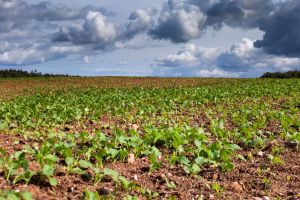
The season means that some crops may go into winter looking backwards.
“There might also be some Fox (bifenox) in between if there’s a flush of charlock, but the OSR is nowhere near strong enough at the moment for us to anticipate putting this on,” he says.
The key thing for crops in David’s region is that they get a good soaking of rain soon. “The general consensus is that we need 20-30mm of rain. Whatever moisture we get will be beneficial but we might just have to accept that crops going into winter will be backwards.”
One crop that has appeared to cope better than others is Elsoms’ primed Tennyson, notes David. “I’ve got a grower who drilled Ambassador, Aquila and Tennyson at the same time and the Tennyson is 10 days ahead of the other two, so it seems to have had a good start.”
North
According to Chris Martin of Agrovista, the picture in the northern regions is a completely mixed bag. “Last year was a perfect year for establishing OSR and I think many have forgotten how hard it can be to grow, so a lot has been put in the ground and a lot has had to be redrilled.
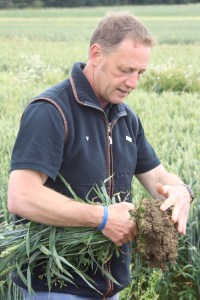
Some crops have been decimated by CSFB and others are just hanging on, says Chris Martin.
“But the OSR that was drilled at the end of July or in early August had some rain straight after and by mid-September it was knee high and looked fantastic.”
However, it’s a different story for the crops that had just started poking through over the August Bank Holiday weekend, he says. “This has been decimated by CSFB. Some of it’s gone and some is hanging on by the skin of its teeth.”
And it’s been complete luck of the draw with moisture, adds Chris. “Regardless of cultivation practice or seedbed preparation, it’s all been down to rainfall. And on the back of that, weed control will vary quite dramatically with the stage of the crop out there. There’s been very little pre-em done. Normally there would have been some clomazone and metazachlor applications to mop up broadleaf weeds but that’s hardly happened this year, so there’s a lot of very weedy fields out there.”
Chris has seen the first graminicide applications go on for grassweeds as of mid-September with Centurion Max being applied for grassweeds, including ryegrass.
“In terms of broadleaf weeds, cranesbill seems to have thrived this year and there’s also a lot of speedwell, poppy and deadnettle out there. Belkar is a good start to douse down these weeds before the canopies get too big,” says Chris. “For really thick crops, it’s better to get onto them before they shade out the weeds, but in thinner crops growers might want to wait until they can apply Astrokerb or hit them with Kerb in November.
“It’s definitely better to wait if your crops are thinner and it’s dubious as to whether or not they’ll survive. But I really think we’ll see more use of Belkar and Astrokerb this year just because of the lack of pre-em that’s been applied,” he adds.
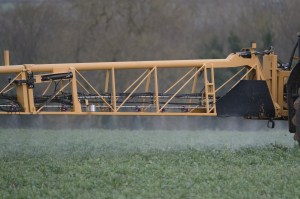
The biggest issue this autumn will be the timing of grassweed control.
“Most people will have put a half rate of Belkar on around mid-September or in the few weeks after then, especially on more backwards crops. But the biggest issue will be with timing grassweed control. Most fields of OSR will have an application of Centurion Max and the two-week interval between this and applying anything else will push Belkar applications later than growers would like. So we might see one hit of Belkar at a higher rate or a second half rate of Belkar in a tank-mix with either Astrokerb or Kerb.”
Chris thinks that the more backwards crops that only get a low rate of Belkar will really get the value from an application of Kerb. “Chickweed is a big one that Kerb will be tackling in November. You can put it on a thick canopy and it will get to the ground and spread.”
But some growers may opt to wait and use Korvetto in the spring, says Chris. “This could be a fallback for mayweed and poppy if the worst comes to the worst. But it’s a gamble as you’ll need to get to the start of March before you can apply it and then it has to be sprayed before the flower buds are visible.”
This article was taken from the latest issue of CPM. For more articles like this, subscribe here.

